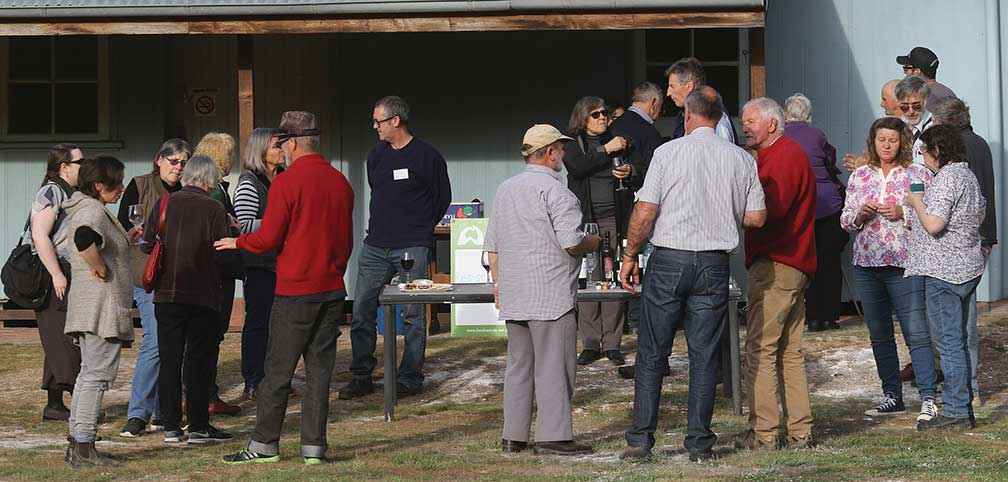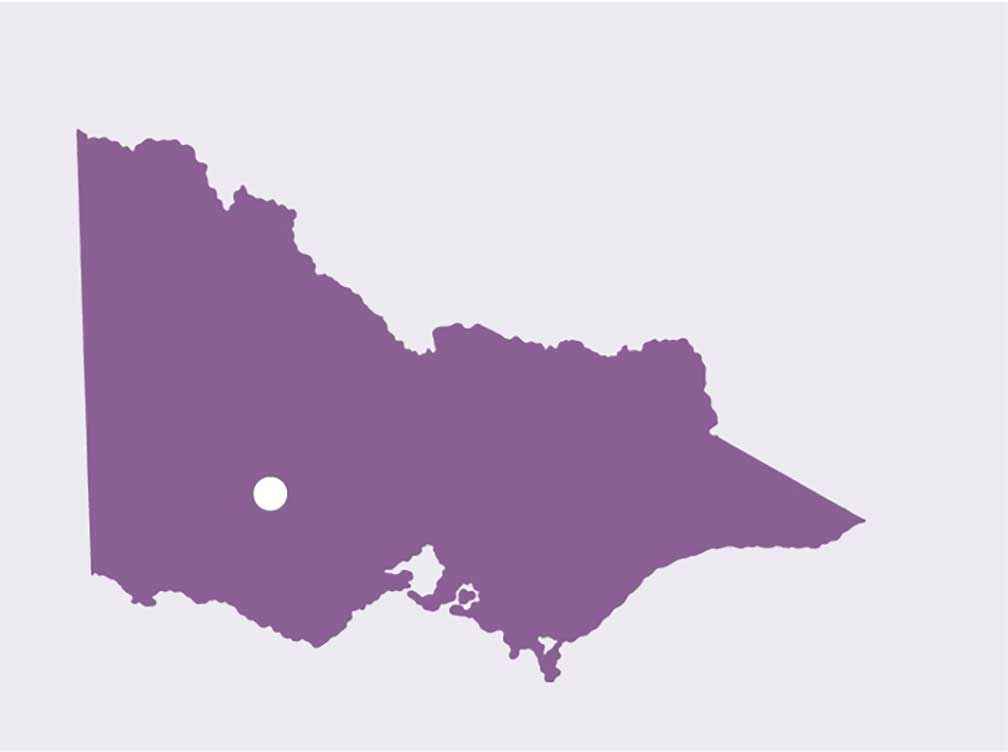Victorian Landcare Magazine - Summer 2018, Issue 71

Sharing the Landcare Story was the theme of the North Central Regional Landcare Forum, held in October 2017 at Stuart Mill near St Arnaud. It was the first event of the new Landcare Victoria Inc (LVI) organisation, and drew Landcarers from across the State. The program was a mix of talks, workshops, group reports and a bus tour exploring sites and activities across the region.
The local Landcare community led by Regional Landcare Coordinator Tess Grieves, and LVI, were involved in developing and organising the program. Kaye Rodden, the Deputy Chair (Advocacy and Partnerships) of LVI, explained how LVI came into being.
“In Victoria, Landcare was previously supported through the Victorian Farm, Tree and Landcare Association and the Victoria Landcare Council. These two organisations merged and partnered to create the new entity, Landcare Victoria Incorporated (LVI), which now assumes responsibility for the Landcare support services and advocacy provided by both previous organisations, and represents Landcare in Victoria to government, other organisations and the public. It is anticipated that this change will enable Landcare members in Victoria to develop clearer accountability and stronger representation within the national structure,” Kaye said.
Terry Hubbard, Chair of LVI and then Chair of the national body, the National Landcare Network, welcomed the forum participants and Rebecca Phillips, a Dja Dja Wurrung woman who led a beautiful and moving Welcome to Country ceremony. She highlighted the shared values of Indigenous and non-Indigenous people who care for, protect and depend on the land for their livelihood and identity.
Penny Roberts then talked about the workings of her group, Newham and District Landcare Group, and its role in welcoming people to the district, forming new friendships and working together to plan, finance and carry out projects.
The next day an information session and workshop outlined the ideas and structure for the new LVI. A Members’ Council with grassroots representatives has been proposed to develop ideas and policy, and identify issues of concern, for the LVI Committee of Management to consider.
The local Landcare community organised a terrific half-day bus trip around the region. The first stop was the historic Tottington Station, part of the original squatter run of the 1840s with its woolshed built of unsawn timber and no nails! The woolshed is the oldest still in use in Victoria. Owner Tom Small showed his obvious pride in its history and continued efficiency for comfortable sheep handling.
Tom and his family have been keen tree planters since they took over the property in the 1950s and have established extensive shelterbelts and corridors on the property. Shelterbelts play an integral part in Tom’s farm management, being used at times as lambing paddocks when weather conditions turn bad. Tom is keen to increase his twin lamb survival rate and finds that small flocks in these protected areas are effective – an environmental and economic win.

Above: North Central Landcare Forum delegates are welcomed at Stuart Mill.
The management of the water storages in the region has changed drastically following the conversion of open channels to pipeline distribution for stock and domestic water for Wimmera-Mallee communities. The pipeline has reduced the need for some water storages that have been important recreation areas and wildlife habitats for many generations.
The bus tour visited a number of lakes including Batyo Catyo and Taylors Lake to see and discuss the issues the pipeline has raised. Batyo Catyo has now been downgraded as a storage and recreation lake, which is a cause of concern for locals who have lost a local asset.
Fiona Burchell from the Avon Plains Banyena Landcare Group pointed out that increased pressures on other lakes in the area can create conflicts between pressure from recreational users and the protection of biodiversity.
The region’s lakes have a significant Aboriginal history and many artefacts including scar trees from which bark was taken for various uses such as coolamons, shields and perhaps small canoes. Kevin Spence, Landcare Facilitator for the Northern Grampians and Buloke Landcare Network stressed how special the lakes are and the need to protect them for all interests.
“When you stand quietly around some of these lakes, you can imagine the greeting and celebrating of tribal visitors and the general life on the lake a hundred generations ago,” Kevin said.
Landcare stalwart Rob Youl hosted a tour of his property north of St Arnaud. The property boasts approximately 30 hectares of remnant blue mallee (Eucalyptus polybractea) to which Rob has added, with seedlings and direct seeding, another 50 hectares over the last ten years.
Rob’s aims are both local and global.
“I would like to think the plantings will be significant for a number of reasons – as a carbon sink to temper climate change, for the improvement of the landscape, for biodiversity benefits and possibly as a future source of eucalyptus oil,” Rob said.
"The management of the water storages in the region has changed drastically following the conversion of open channels to pipeline distribution for stock and domestic water for Wimmera-Mallee communities."
Following a great evening meal we heard from the VFF President David Jochinke who talked about clean, green agriculture and the role of Landcare. David discussed the pressures on farm production and the need to have sustainable land management systems.
According to David, technology is changing rapidly, particularly in cropping, and farmers are continually pressured to become more efficient – with labour costs often a major item.
“Machinery is getting larger and it is becoming more difficult to manage small areas, such as around paddock trees. There is an ongoing battle to get the balance right between conservation and farm efficiency. Landcare has played a role in identifying conservation issues and urging sustainable agriculture but while we must be sustainable, it is important to remember that farmers need to make a living if they are to survive,” David said.
His presentation spurred a robust question and answer session with the remaining dinner guests!
On the last morning of the forum groups and regions gave reports on their interests and activities. We were impressed by the use of new technology, especially for mapping, surveying and recording activities across many areas. Sharing these ideas and knowledge gives confidence to others to take on new ways of doing things. This was a fitting end to a very valuable forum, the first of many we expect under the new LVI banner.
Wendy and Horrie Poussard are foundation members of Australian Landcare International. They have been involved in Landcare and community development for many years.
For further information email poussard@iinet.net.au

Above: The North Central Regional Landcare Forum was held at Stuart Mill near St Arnaud.